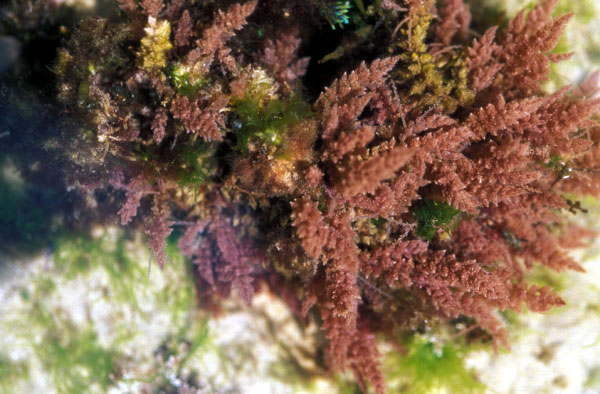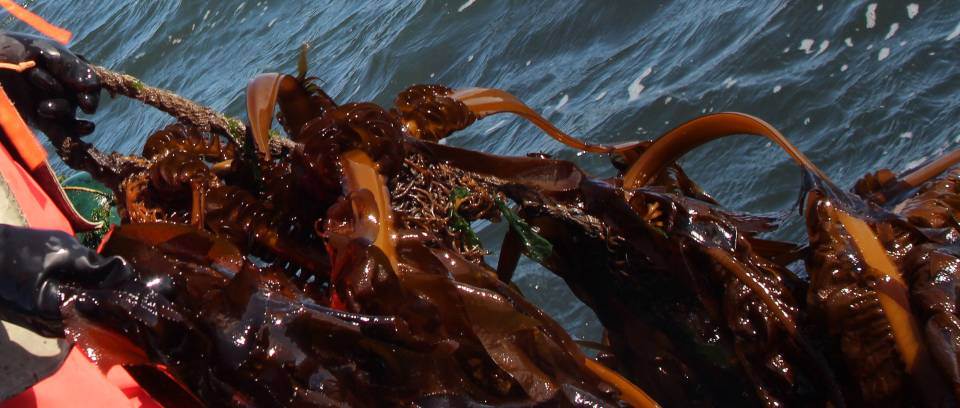Integrated multi-trophic aquaculture (IMTA) involves strategic co-culture of organisms so that wastes from one species are used to grow another. Seaweeds can be used in IMTA systems to remove and utilise dissolved inorganic nutrients from fish aquaculture, improving environmental performance and providing economic benefits through diversification and increased productivity. IMTA with seaweed could be applied to assist sustainable expansion of fish farming in South Australia (SA), where dissolved nitrogen (N) wastes limit environmental carrying capacity. Seaweed farming is also of interest in Australia to meet increasing demand for seaweed products, of which Australia is a net importer. Several native seaweeds have been identified as potential candidates for aquaculture in SA based on general knowledge of their biology and potential economic value, but specific knowledge of their suitability for cultivation was lacking. I investigated eight candidate seaweeds, comprising four red (Solieria robusta, Gelidium australe, Pterocladia lucida, Plocamium angustum) and four brown (Ecklonia radiata, Cystophora subfarcinata, Sargassum linearifolium, Scytothalia dorycarpa) species, to determine which species were most suitable for farming, with specific emphasis on application to IMTA in SA. I assessed feasibility of cultivation and potential for nutrient remediation of the eight species in two field trials and in laboratory experiments, and applied species distribution modelling (SDM) to identify the most suitable candidate species for aquaculture in the vicinity of current SA fish farms. My research identified the red seaweed Solieria robusta and the brown seaweed Ecklonia radiata as the most suitable species for aquaculture. The red Gelidium australe showed promising growth in a pilot field trial and removed the most N in a 4-week laboratory trial, but S. robusta grew best in laboratory trials and would remove more N over time due to its faster growth. Solieria robusta tolerated a wider temperature range and grew better at higher temperatures than G. australe. SDM results demonstrated that S. robusta has high environmental suitability in aquaculture zones throughout Spencer Gulf, where all SA finfish farming currently occurs, while G. australe was poorly suited to most existing aquaculture zones. Pterocladia lucida and Plocamium angustum had slower growth rates, and SDMs indicated low suitability in aquaculture zones. There was little difference in field performance of the brown seaweeds, apart from Scytothalia dorycarpa, which performed poorly, but Ecklonia radiata was most amenable to hatchery reproduction and cultivation. SDM showed that several aquaculture zones in southern Spencer Gulf had good suitability for E. radiata. Seedstock production methods used for commercially farmed relatives were successfully applied to S. robusta and E. radiata, and I developed protocols that can be employed to upscale production of these seaweeds. Solieria robusta and E. radiata demonstrated the ability to accumulate tissue N, and N uptake rates comparable to other IMTA seaweeds, supporting the suitability of these species for IMTA. Data from my experiments help to inform suitable depths, locations and seasons for cultivation of these seaweeds, and to incorporate N removal by seaweeds into biogeochemical models. These experiments provide the foundation for developing seaweed aquaculture in southern Australia, including IMTA.
Digital library
-
-
Integrated multi-trophic aquaculture (IMTA) involves strategic co-culture of organisms so that wastes from one species are used to grow another. Seaweeds can be used in IMTA systems to remove and utilise dissolved inorganic nutrients from fish aquaculture, improving environmental performance and providing economic benefits through diversification and increased productivity.
IMTA with seaweed could be applied to assist sustainable expansion of fish farming in South Australia (SA), where dissolved nitrogen (N) wastes limit environmental carrying capacity. Seaweed farming is also of interest in Australia to meet increasing demand for seaweed products, of which Australia is a net importer. Several native seaweeds have been identified as potential candidates for aquaculture in SA based on general knowledge of their biology and potential economic value, but specific knowledge of their suitability for cultivation was lacking. I investigated eight candidate seaweeds, comprising four red (Solieria robusta, Gelidium australe, Pterocladia lucida, Plocamium angustum) and four brown (Ecklonia radiata, Cystophora subfarcinata, Sargassum linearifolium, Scytothalia dorycarpa) species, to determine which species were most suitable for farming, with specific emphasis on application to IMTA in SA. I assessed feasibility of cultivation and potential for nutrient remediation of the eight species in two field trials and in laboratory experiments, and applied species distribution modelling (SDM) to identify the most suitable candidate species for aquaculture in the vicinity of current SA fish farms.
My research identified the red seaweed Solieria robusta and the brown seaweed Ecklonia radiata as the most suitable species for aquaculture. The red Gelidium australe showed promising growth in a pilot field trial and removed the most N in a 4-week laboratory trial, but S. robusta grew best in laboratory trials and would remove more N over time due to its faster growth. Solieria robusta tolerated a wider temperature range and grew better at higher temperatures than G. australe. SDM results demonstrated that S. robusta has high environmental suitability in aquaculture zones throughout Spencer Gulf, where all SA finfish farming currently occurs, while G. australe was poorly suited to most existing aquaculture zones. Pterocladia lucida and Plocamium angustum had slower growth rates, and SDMs indicated low suitability in aquaculture zones. There was little difference in field performance of the brown seaweeds, apart from Scytothalia dorycarpa, which performed poorly, but Ecklonia radiata was most amenable to hatchery reproduction and cultivation. SDM showed that several aquaculture zones in southern Spencer Gulf had good suitability for E. radiata.
Seedstock production methods used for commercially farmed relatives were successfully applied to S. robusta and E. radiata, and I developed protocols that can be employed to up- scale production of these seaweeds. Solieria robusta and E. radiata demonstrated the ability to accumulate tissue N, and N uptake rates comparable to other IMTA seaweeds, supporting the suitability of these species for IMTA. Data from my experiments help to inform suitable depths, locations and seasons for cultivation of these seaweeds, and to incorporate N removal by seaweeds into biogeochemical models. These experiments provide the foundation for developing seaweed aquaculture in southern Australia, including IMTA.
-
Intensive fish aquaculture has raised serious environmental concerns, including eutrophication, harmful algal blooms, fish kills, etc. Integrated multi-trophic aquaculture (IMTA) may be the most suitable aquaculture technology to achieve environmental and economic sustainability. The objectives of present study are to review the status of aquaculture and IMTA in Korea; and to determine the challenges to apply the principles of IMTA to intensive monoculture in Korean coastal waters. Korea has been one of the leading countries in aquaculture. Like other advanced countries in aquaculture, such as China and Japan, most aquaculture practices in Korea are intensive monoculture and farms are highly concentrated in bays or estuaries with restricted circulation. In intensive open water aquaculture in these waters, nutrient producers (finfish) are cultured mostly in southeastern Korea whereas extractive organisms (seaweeds) are farmed in the southwestern Korea. There are relatively small areas of overlap between these monocultures, causing environmental issues and reduction in the quality of aquacultured products. Recent attempts of IMTA in Korean coastal waters suggest that IMTA can be a good management tool for improving Korean aquaculture although there are still challenges to overcome. These challenges include development of temperature tolerant species/strains of extractive organisms such as seaweeds and sea cucumbers. Most aquacultured seaweed and sea cucumber species in Korea do not grow well during the summer months, when the release of finfish effluent is at its peak. It is essential to the future success of aquaculture in Korea that a coastal zone management (CZM) be developed that reflects coordinating fed and extractive organisms in coastal bays and estuaries rather them keeping them isolated from one another. The importance of a new regulatory framework advocating IMTA solutions will be essential for environmental protection and continued success of aquaculture in Korea. Although this review is a case study in Korea for IMTA, it will also provide critical information for coastal managers, aquaculturists and regulators in other countries where there are intensive monocultures of fed and extractive organisms.
-
This research was conducted in the seaweed industries in South Sulawesi, especially in theMakassar industrial area (KIMA). The purpose of this study is to develop a strategy for developingseaweed commodity processing industries to increase added value. Analysis of the data used is usingSWOT analysis. With SWOT analysis, it can produce several alternative strategies in making gooddecisions to be carried out. So that it can determine the development strategy of the seaweed industry. Theresults showed an IFAS score of 2.79 and a score for the EFAS results of 2.85. When converted into IEMatrix diagram, it is located in quadrant V, where the results of the company enter into the phase ofGrowth and Stability. The right strategy for companies in quadrant V is SO strategy, using a strategy thatutilizes existing opportunities by utilizing the strengths they possess, namely by intensification andextensification of cultivated land, diversification of seaweed processed products and development of fisheryproducts that have high added value including the biotechnology-based industry.
-
The Farm Aquaculture Resource Management (FARM) model has been applied to several shellfish species and aquaculture types. The performance of the FARM model, developed to simulate potential harvest, key financial data, and water quality impacts at the farm-scale, was tested in five systems in the European Union: Loch Creran, Scotland (Pacific oyster), Pertuis Breton, France (blue mussel), Bay of Piran, Slovenia (Mediterranean mussel), Chioggia, Italy (Mediterranean mussel) and Ria Formosa, Portugal (Manila clam). These systems range from open coasts to estuaries, and are used for shellfish aquaculture by means of different cultivation techniques (e.g. oyster bottom culture in Loch Creran and mussel longlines and poles in Pertuis Breton). The drivers for the FARM model were supplied by measured data, outputs of system–scale models or a combination of both.
The results (given in total fresh weight) generally show good agreement with reported annual production (shown in brackets) at each farm: simulated production of 134 t of Pacific oyster in Loch Creran (150 t, −10%), 2691 t of blue mussel in Pertuis Breton (2304 t, +17%), 314 t of Mediterranean mussel in the Bay of Piran (200 t, +57%), 545 t of Mediterranean mussel in Chioggia (660 t, −17%) and 119 t of Manila clam in Ria Formosa (104 t, +15%). The nitrogen mass balance for each farm was also determined with the FARM model. The net removal of nitrogen (N) by the farms was estimated to correspond to 1151 population equivalents per year (PEQ y−1) in Loch Creran, 39505 PEQ y−1 in Pertuis Breton, 210 PEQ y−1 in the Bay of Piran, 7108 PEQ y−1 in Chioggia and 8748 PEQ y−1 in Ria Formosa. The aggregate income due to both the shellfish sale and substitution value of land-based fertilizer reduction or nutrient treatment was estimated to be about 680 k€ y−1 in Loch Creran, 14930 k€ y−1 in Pertuis Breton, 220 k€ y−1 in the Bay of Piran, 2560 k€ y−1 in Chioggia, and 5040 k€ y−1 in Ria Formosa. Outputs of FARM may be used to analyse the farm production potential and profit maximization according to seeding densities and/or spatial distribution. Results of a marginal analysis for all the study sites were determined. As an example, profit maximization in Loch Creran was obtained with 97 t of seed, resulting in a total production of 440 t (profit of 2100 k€ for a culture period of about 2 years). FARM additionally integrates the well-known ASSETS model, for assessment of farm-related eutrophication impacts. The assessment results for the five study sites show that water quality is either maintained or improved in all farms under standard conditions of culture practice.
FARM results may be used by farmers to analyse farm production potential and by managers for environmental assessment of farm-related water quality impacts, whether positive or negative. It is a useful tool for all stakeholders for the valuation of nitrogen credits, which may be traded as part of an integrated catchment management plan.
-
To suffice the escalating global energy demand, microalgae are deemed as high potential surrogate feedstocks for liquid fuels. The major encumbrance for the commercialization of microalgae cultivation is due to the high costs of nutrients such as carbon, phosphorous, and nitrogen. Meanwhile, the organic-rich anaerobic digestate which is difficult to be purified by conventional techniques is appropriate to be used as a low-cost nutrient source for the economic viability and sustainability of microalgae production. This option is also beneficial in terms of reutilize the organic fraction of solid waste instead of discarded as zero-value waste. Anaerobic digestate is the side prod- uct of biogas production during anaerobic digestion process, where optimum nutrients are needed to satisfy the physiological needs to grow microalgae. Besides, the turbidity, competing biological contaminants, ammonia and metal toxicity of the digestate are also potentially contributing to the inhibition of microalgae growth. Thus, this review is aimed to explicate the feasibility of utilizing the anaerobic digestate to cultivate microalgae by evaluat- ing their potential challenges and solutions. The proposed potential solutions (digestate dilution and pre- treatment, microalgae strain selection, extra organics addition, nitrification and desulfurization) corresponding to the state-of-the-art challenges are applicable as future directions of the research.
-
The interest in seaweeds by humans seems to have originated over 1700 years ago when several seaweed species became used in ethnic cuisines. These initial applications enabled the start of farming in Japan, China and Korea. However, in Western countries, demand for seaweed polysaccharides began only after World War II, when the demand for agar, alginate and carrageenans developed. At the present time, many researchers and entrepreneurs predict a promising future for innovation in the seaweed industry. In this context, this special issue covers some advances and constraints that seaweed farming and the utilisation of its biomass face today.
-
A PDF of a demonstration project on "An Integrated System to Produce Food, Fuel, Energy in Hawai'i".
-
Seaplants (a better alternative to the misnomer “Seaweeds”), by all means, are “future plants”; they have been projected as the future viand for ever-increasing human populations, viable and sustainable source for biofuel without disturbing global food scenario, as potential candidates for carbon capture and sequestration that is considered as a practical remedy for global warming, and they have a number of pharmaceutical, industrial and biotechnological applications. However, information on its cultivation methods or life history remain obscure to a majority of marine botanists. While life histories of seaweeds have traditionally been an exotic topic for specialists-language of which is ciphered with scientific jargons incomprehensible to general scientific audience, its agronomy had been a trade secret for coastal communities in East Asian countries, especially Japan, the Philippines and Indonesia. In this up-to-date illustrated review, current scientific understanding on the life-histories of agronomically pertinent seaweeds are presented in a fashion akin to popular science journalism with an overview of major coastal and offshore seaweed mariculture techniques, presented with the aid of clear-tounderstand illustrations. Also discussed in this report are recent advances in the algal natural products; including uses in hydrocolloid and pharmaceutical industries, Integrated Multi Trophic Aquaculture, energy production, environmental impacts of the seafarming and its counter measures, before concluding with an overview of future research avenues.
-
Together with observations on the various modes of practice of regular practitioners, and others in the present day, enabling the reader at one view to become acquainted with every method now pursuing for the curse of this malady.





